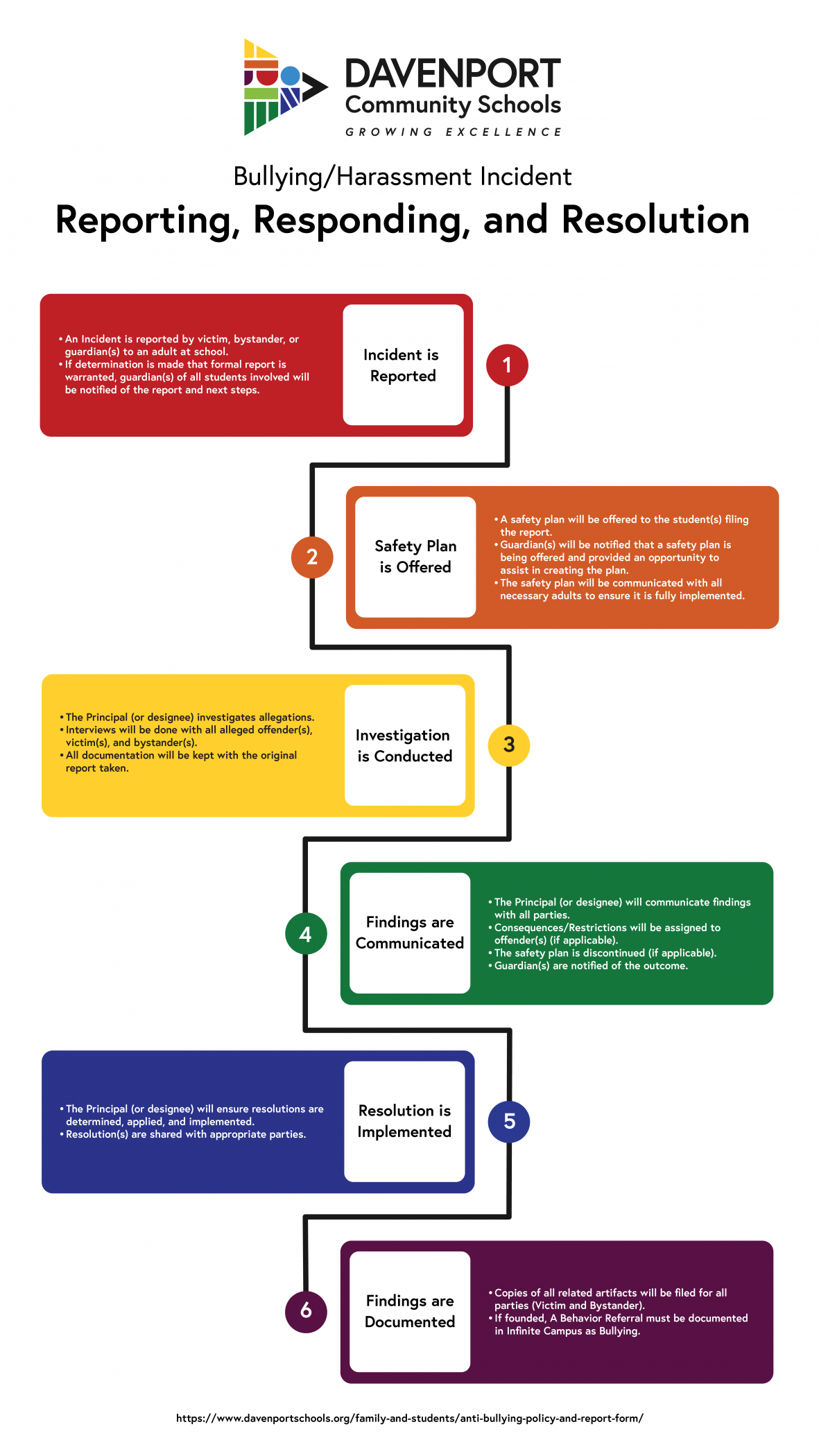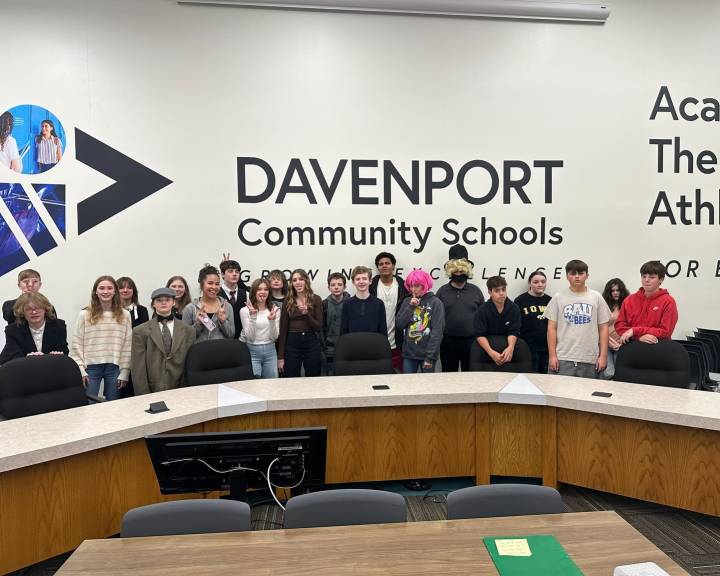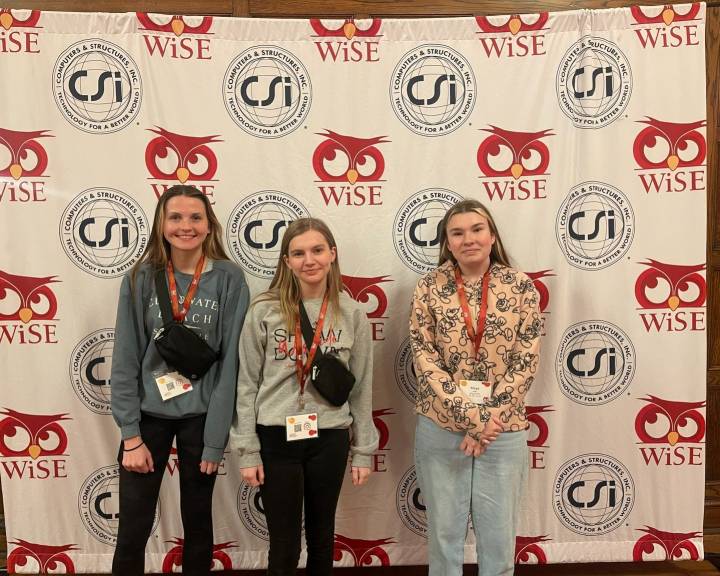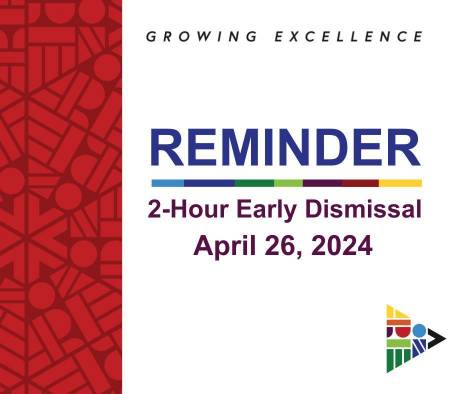An important piece of our mission of Growing Excellence in DCSD is to ensure all students feel safe, connected, and engaged in our schools. As a result, we do not tolerate bullying within our schools. Our Principals are committed to the safety of your student and resolution is their ultimate goal of any bullying concern that is shared. In order to achieve this, please contact your building principal to address any questions or concerns you may have.
The remainder of this information will illustrate our Reporting, Responding, and Resolution System for Bullying and Harassment.

Please note that initial report happens at the building level. If after following the steps listed above at the building level you are still not satisfied with the outcome of the internal investigation, the report may be escalated to the district level through the HR & Equity Department through the contact information listed below:
Jabari Woods, Associate Director of HR & Equity 563-336-7496
Jami Weinzierl, Director of HR & Equity 563-336-7487
DCSD Definition for Bullying:
Bullying is direct, indirect, or technology-based unwanted, aggressive behavior among school aged children that involves a real or perceived power imbalance. The behavior is repeated, or has the potential to be repeated, over time. In order to be considered bullying, the behavior must be aggressive and include:
- An Imbalance of Power: Kids who bully use their power—such as physical strength, access to embarrassing information, or popularity—to control or harm others. Power imbalances can change over time and in different situations, even if they involve the same people.
- Repetition: Bullying behaviors happen more than once or have the potential to happen more than once.
Bullying and harassment are defined in Iowa Code section 280.28 as: Any electronic, written, verbal, or physical act or conduct toward a student which is based on any actual or perceived trait or characteristic of the student and which creates an objectively hostile school environment that meets one or more of the following conditions:
- Places the student in reasonable fear of harm to the student’s person or property.
- Has a substantial detrimental effect on the student’s physical or mental health.
- Has the effect of substantially interfering with a student’s academic performance.
- Has the effect of substantially interfering with the student’s ability to participate in or benefit from the services, activities, or privileges provided by a school.
Bullying behavior can be:
- Verbal: speaking or writing mean things
- Social (Relational): hurting someone’s reputation or relationships
- Physical: hurting a person’s body or possessions
Conflict is not Bullying. A conflict is a disagreement or antagonism between two or more people. All parties involved have some responsibility for the encounter. It is not bullying when two or more kids with no perceived power imbalance, fight, have an argument or disagree. Conflict resolution strategies can be employed to find common ground when both parties have a vested interest in resolving the conflict. Peer mediation may be appropriate in conflict situations. Bullying is peer abuse and needs to be reported and treated as such. Peer mediation is not appropriate in bullying.












